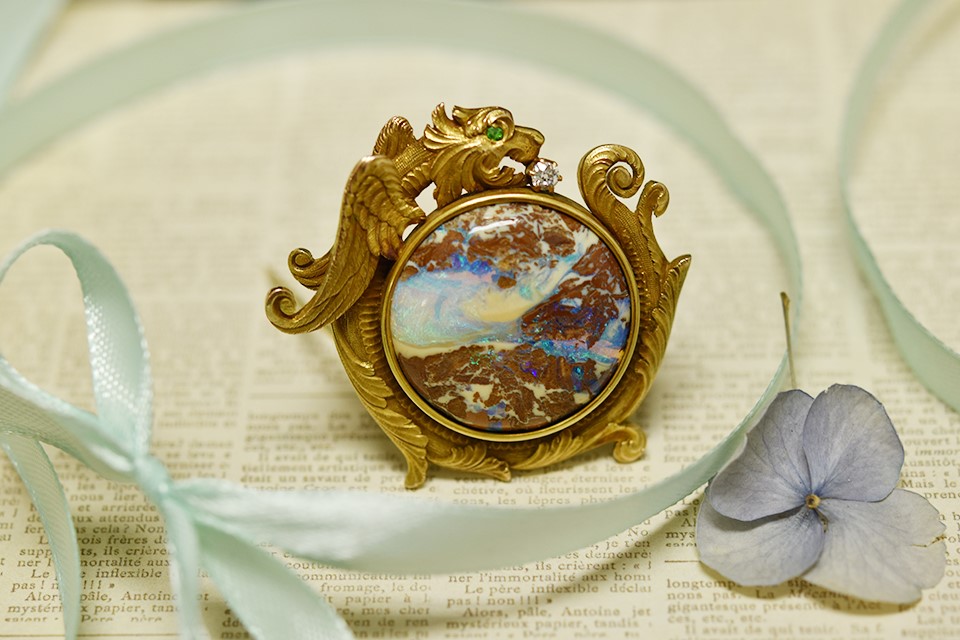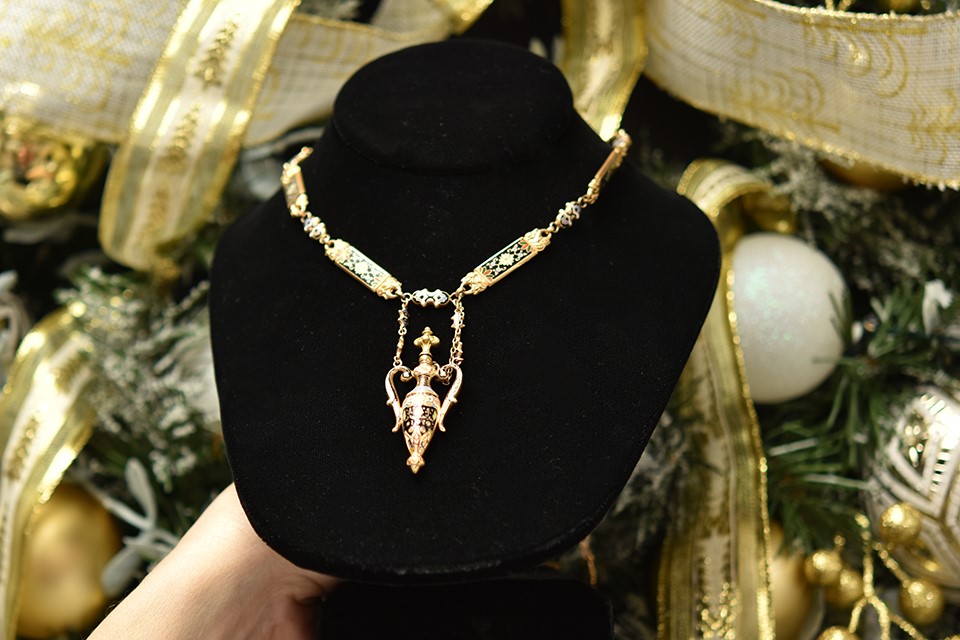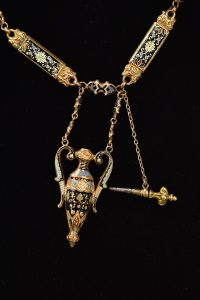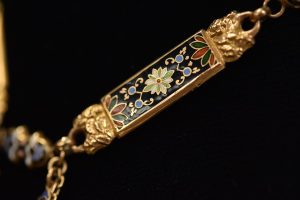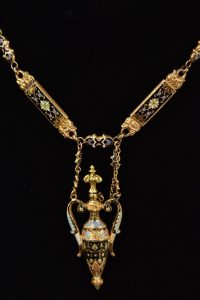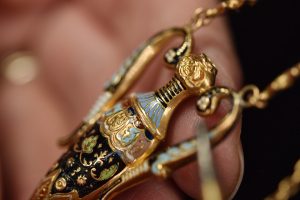Joden Girl
Baubles, Bling, and A Collector’s Things
Folklore abounds in regard to the griffin (or gryphon). Some legends describe this mythical creature to have the body, back legs and tail of a lion combined with the head, wings and front talons of an eagle. There are some stories that claim that only female griffins have wings, while others purport that all of them are winged. Others still claim that the griffin sports the tail of serpent, not a lion. The one common thread is that the griffin is the guardian of treasure, using their fierce appearance and nature to scare away thieves.
In the Victorian era, griffins were a symbol of great wealth, power, courage and prestige. Usually sculpted from gold with a velvety patina, griffins were a popular theme, popping up in everything from stick pins and brooches to pendants and rings. This particular one is a truly spectacular example.
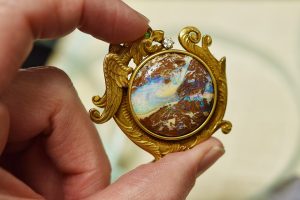
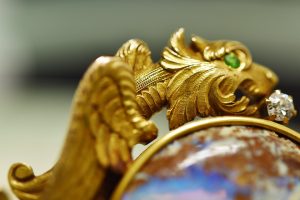
Sizable, this beauty tests as 18-karat gold. With a serpent’s sinewy tail and prominent wings, surely this ferocious beast must be a female. Every intricately detailed bit of her scaled body wraps artfully around a large round natural opal – the treasure that she is, indeed, protecting. This 15.00 carat gem highlights beautiful color play with shades of cream, green and blue mixed with large expanses of matrix, which is the host rock where the opal formed. Her intense green gaze was achieved by using a natural demantoid garnet that weighs just .02 carat. Clutched in her jaws is an Old Mine Cut diamond that weighs .12 carat.
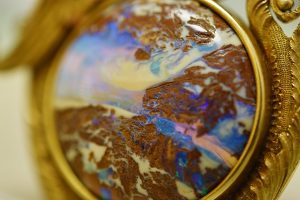
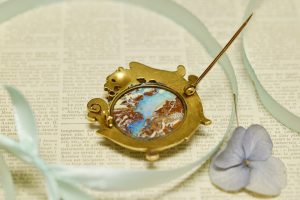
Greek mythology tells us that griffins pulled Apollo’s (the god of the sun) chariot across the sky – it was the only flying creature strong enough to do it. This unique gem is equally suited to a man’s or a lady’s lapel. Pin it to yours for just $6,500.00.
“You can go to a museum and look or come to us and touch.”
Written by Carrie Martin
Photos by Dana Jerpe

